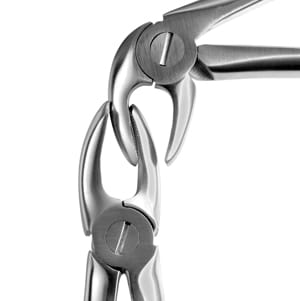
BACKGROUND: Mr C phones his dental surgery for an emergency appointment complaining of severe toothache. Dr Y examines the patient and notes that UL6 is badly decayed and the canal appears to be partially sclerosed on X-ray.
He advises the patient of the options, including root canal treatment (RCT) or extraction. Two weeks later Mr C attends for RCT and is very nervous, asking for Dr Y to stop at numerous points, but the treatment is completed without any major difficulties.
A month later Mr C returns to the surgery reporting that the UL6 had “cracked” when he was eating popcorn at the cinema. Dr Y examines the tooth which has catastrophically fractured. The only viable option is extraction.
Mr C is again very nervous and Dr Y reassures him that the area around the tooth will be well numbed and he has only to raise his hand to halt the procedure. The patient is clearly uncomfortable with injections and the dental nurse tries also to offer reassurance. Dr Y leaves ample time for the anaesthetic to take effect and carries on with the extraction. Friable coronal tissue fractures off immediately and Mr C complains of “extreme pain”. Dr Y attempts to reassure the patient and administers more anaesthetic. Just as soon as Dr Y starts again with the extraction Mr C becomes distressed and again halts the procedure.
The dentist at this stage judges that it would be best to discontinue the extraction given Mr C’s significant distress. The root is still firmly in the socket and to further mobilise it without complete removal would risk more significant post-operative complications. Dr Y ensures that complete haemostasis has been achieved and offers Mr C post-operative advice, including appropriate analgesia. A referral to the local dental hospital is arranged.
A dental nurse attempts to follow-up on the patient’s condition that next week but her calls are not returned. Three months later Dr Y is distressed to receive a letter from the GDC informing him of a potential fitness to practise investigation in regard to his treatment of Mr C.
ANALYSIS/OUTCOME: An MDDUS adviser reassures the dentist and asks that he forward the GDC letter, including Mr C’s complaint. A detailed response is not required at this stage. The matter has been assigned to a GDC caseworker who will request a clinical advice report and then review at formal assessment if it will be referred to case examiners.
In his complaint Mr C alleges not only “substandard” treatment but also “rough handling” and a dismissive attitude in regard to his clear anxiety. He further claims there was no follow-up after he left the surgery “bleeding and in agony” and that the next morning he had to go to A&E where he was given a prescription for stronger analgesia. A delay in the referral also meant that Mr C spent over two weeks in pain before eventually having the remainder of the tooth extracted at the dental hospital under conscious sedation.
Two months later a letter arrives from the GDC stating that the information provided by Mr C does not amount to an allegation that Dr Y’s fitness to practise is impaired. The clinical advice report states that the dentist took a pre-operative radiograph and advised Mr C of the treatment options following the fracture of UL6. He obtained consent before the extraction and stopped the procedure when the patient was experiencing pain and anxiety – making the appropriate decision to refer.
Communication issues were considered outside the scope of the investigation but the adviser noted that an unsympathetic manner does not necessarily warrant further referral.
The case is closed with no further action.
KEY POINTS
- Most GDC cases do not progress beyond the initial triage or investigatory stage.
- Clear, comprehensive records are the best defence in such cases.
This page was correct at the time of publication. Any guidance is intended as general guidance for members only. If you are a member and need specific advice relating to your own circumstances, please contact one of our advisers.
Save this article
Save this article to a list of favourite articles which members can access in their account.
Save to library